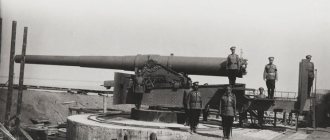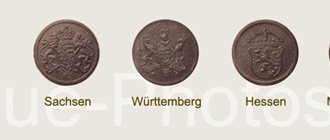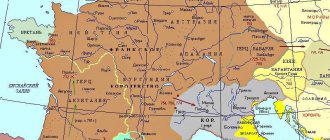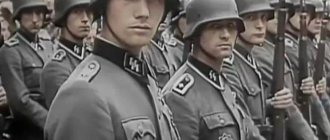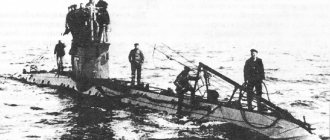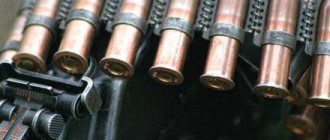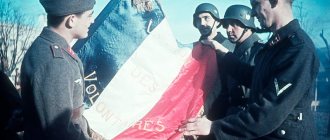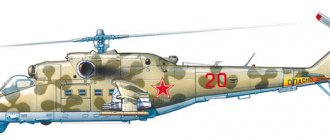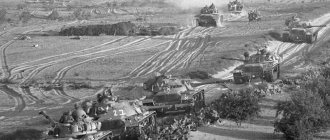sons
A hundred years ago, the Southern Urals became one of the centers of the Civil War - in the spring of 1918, a powerful uprising of the Orenburg Cossacks against the Reds broke out here. On the night of April 4, the Cossacks raided Orenburg, killing many Soviet workers. Even women and children became victims of the raid. The Reds were able to repel the attack, after which they responded with brutal measures characteristic of the fight against the partisan movement at all times: they began to burn Cossack villages and exterminate rebel leaders - officers. The Orenburg military revolutionary headquarters put forward an ultimatum to all Cossack villages and villages: “We will respond to the white terror of traitorous officers, cadets and Cossacks adjoining them, attacking revolutionary workers and peasants, slaughtering their families with young children, with merciless red terror, the force of artillery fire and the strength of the worker-peasant revolutionary masses. Let all villages and villages remember that if any of them makes even the slightest move against the revolutionary workers and peasants, it will be swept off the face of the earth, without any discrimination between the guilty and the innocent, by the force of the weapons of the revolutionary troops.”1
It was then that this tragedy, which shocked many even at that harsh time, occurred. On April 9, 1918, at the Dubinovka station of the Orsk railway, two Cossack officers were handed over to the Reds by the Cossacks and shot - brothers, podesauls Vasily and Mikhail Mikhailov. Vasily was not even twenty-six, Mikhail was thirty years old. Despite their young age, both had already fought in the First World War and earned military awards.
The village of Verkhneozernaya on the right bank of the Urals, where the Mikhailovs lived, found itself in the sphere of the Cossack anti-Bolshevik uprising. The Mikhailovs, as officers, led two hundred local Cossacks who gathered to join the rebels and take part in the raid on Orenburg. It was believed that the idea of providing armed resistance to the Reds belonged to their father, General Mikhailov. However, he himself subsequently argued that this decision belonged to the villagers themselves.
However, the Cossacks did not reach Orenburg - the raid was repulsed, and hundreds returned to their village. Then came news of massacres of those suspected of the raid. Fearing punishment, the Verkhneozerninsky Cossacks held a gathering and sent a delegation to the Reds at the Kondurovsky crossing, 14 versts from the village.
Upon their return, the delegates gathered the village residents and announced the Reds’ demands: to restore Soviet power in the village, hand over the officers as instigators of the resistance, including the Mikhailov family, and pay half a million in indemnity. The Cossacks agreed to the demands, however, out of the entire Mikhailov family, only two brothers were captured, and their father, the general, managed to escape to his brother in the village of Giryalskaya. During their absence from the village, the Mikhailovs' property was distributed to the poor (the confiscated property was later returned).
General Mikhailov recalled the death of his sons: “When the sons returned, the first, Mikhail, and Vasily was still in Giryal2, I wrote a note to Vasily and sent it with a cab driver, so that Vasily would come together to discuss what to do next, and some things were already going on between the population restlessness, whispering. Mikhail and I were getting ready to leave, but I was still waiting for my son Vasily, when suddenly Mikhail ran in and said: “Dad, the Bolsheviks.” I rushed to run towards Giryal and began to hide, and I broke up with Vasily - he came home, and in the evening the Bolsheviks took him away when he got home.”3 Did the general reproach himself for the note that led to the death of his son? For sure. But he kept silent about this.
Evidence from both sides allowed us to reconstruct the circumstances of the shooting. The brothers understood that their fate was unenviable, and asked to call the priest to receive communion. According to an eyewitness, back in their native village, “the brothers... insisted that they be put in the same sleigh. They took me. Lots of people. The women, crying and wailing, were escorted to the outskirts of the village.
Having brought them to the station, they dropped them off again and ordered them to move 15 steps away from the canvas. The brothers knelt down, prayed to God, crossed each other and, hugging tightly, kissed, then both shouted: “Long live the Cossacks, we are dying for the Cossacks!”4 However, the Cossacks the newspaper that published such a note in 1919 may have distorted the last words of those executed so as not to promote monarchist sentiments.
The picture of what happened is completed by the testimony of the organizer of the execution. In 1934, at a meeting of the Orenburg community, Red Civil War veterans shared their memories and revelations. The former commander of one of the first red detachments, Pavel Seliverstovich Kurach (one of the streets of Orenburg is named after him) then said: “I met such officers near Orsk. When I was traveling with a detachment, I caught two Mikhailov brothers. They had passports as if they were teachers from the Penza province, but the front-line soldiers said that they were the Mikhailov brothers.
When they began to interrogate them, they did not want to talk, they looked with contempt. When I left Orenburg, we created an investigative commission. Blinichkin and another anarchist entered there; I don’t remember his last name, but in total there were 4 people. I, as the head of this detachment, approved the resolution of this commission. When they called me to the commission in the morning, I didn’t say anything, but the commission decided to shoot, and the sentence was confirmed. When they were put to death, they shouted: “Long live Nicholas II and the Cossacks”5.
According to a note from a Cossack newspaper, the command “fire!” shouted one of the brothers, Vasily. If you believe this testimony, after the execution the brothers were finished off with bayonets - 13 bayonet wounds were counted on Vasily’s body.
Those executed were buried in their native village. The White press used the high-profile execution to whip up anti-Bolshevik sentiment.
White Horsemen of the Civil War
The First World War clearly demonstrated that in the new conditions of warfare, cavalry could only play a supporting role. Massive cavalry attacks are a thing of the past. The children who dreamed of military exploits imagined themselves no longer in a luxurious hussar uniform, but in a leather pilot’s jacket or a tankman’s uniform. However, the civil war that broke out in Russia showed that it was too early to write off the cavalry.
The Donets are starting
The initiative to create large cavalry formations in the Civil War belonged to the white side. This is not surprising: the counter-revolutionary forces had at their disposal the human resources of the Don and Kuban, and people from there made up a significant part of the former cavalry of the Russian Imperial Army (RIA). Horse breeding centers were also located there, both public and private. The Cossacks who returned from the fields of the Great War mostly retained their horses, which made it possible to create many mounted units within the Don Army already in 1918.
Don Cossacks. pinterest.es
Initially, cavalry was attached to foot regiments, forming a separate formation of 30 to 300 horsemen. Later they began to create separate cavalry regiments. They were formed according to the stanitsa principle and united into numbered regiments consisting of six hundred (in this situation, a hundred did not mean the number of soldiers). Their number was not constant and fluctuated between 150–1000 horsemen. During the hostilities of 1918, the Cossack cavalry, as a rule, was attached to the infantry. Ataman Pyotr Krasnov described Cossack tactics this way:
“Usually, at dawn, they began an offensive in very loose chains from the front, at the same time, in some intricate beam, an encircling column of the main forces with cavalry moved towards the flank and rear of the enemy. If the enemy was ten times stronger than the Cossacks, this was considered normal for a Cossack offensive. As soon as a bypass column appeared, the Bolsheviks began to retreat, then the cavalry rushed at them with a chilling boom, overturned them, destroyed them and took them prisoner. Sometimes the battle began with a feigned retreat of about twenty miles by a Cossack detachment, the enemy rushed to pursue, and at that time the outflanking columns closed behind him, and he found himself in the pocket.”
The text quite realistically - if, of course, we discard the ratio of 1 to 10 - it describes the specifics of the battle tactics of the Civil War in the Don region. As you can see, the cavalry here played more of a supporting role, finishing off the fleeing enemy.
Don Cossacks. Modern reconstruction of the events of the Civil War on the Don. umokrug.ru
However, occasionally there were frontal attacks by horsemen. For example, on May 17, 1919, the guards brigade of the 1st Don Division in horse formation attacked the positions of the Red Army near Lugansk. The attack was prepared by the fire of a white armored train and supported by the infantry of the Gundorovsky battalion. Well-coordinated interaction led to a positive result: the enemy’s positions were captured, and with them several guns and machine guns, although the attack was carried out in a situation of “a discrepancy between the attacking forces and the enemy forces, and in completely open terrain.”
.
The first major operation of the Don cavalry is, perhaps, the raid of the Cossacks of General A.S. Sekreteva in May–June 1919. In March of the same year, the famous Veshensky rebellion began, subsequently brilliantly described by Mikhail Sholokhov. Despite all the courage of the Cossacks, the numerically superior troops of the Red Army almost managed to suppress the uprising. Why almost? Yes, because the commander of the Don Army, General Sidorin, allocated a cavalry group of three divisions (8th, 11th and 12th cavalry) under the command of an experienced cavalryman, Major General Alexander Sekretev. Having covered more than 300 miles, the horsemen broke through the encirclement and united with the rebels. Of course, not everything went smoothly. The pace of the cavalry advance was quite low. In addition, the Cossacks were often distracted from performing their main task, smashing small detachments of Red Army soldiers located nearby. But in any case, this raid radically changed the situation in favor of the whites not only in the area of the uprising, but also on the entire Southern Front, whose troops retreated 150 km.
Alexander Sekretev. chrono.ru
It was from this moment that the white leadership paid close attention to the strategic use of cavalry. The planning of operations was in the hands of the command of the Armed Forces of the South of Russia (AFSR), created by combining the Don and Volunteer armies. The latter was headed by General Anton Denikin, who also headed the AFSR. Let's see how the volunteers fared with the cavalry.
Volunteer Army Cavalry
Having begun to form an army in Rostov-on-Don to counter the Bolsheviks, the white command was faced with a shortage of horses: there were cavalrymen, but there was no cavalry. Having set out on the Ice Campaign, General Lavr Kornilov had only a little more than 300 horsemen in three “regiments”, which in March 1918 were consolidated into the 1st Cavalry Regiment under the command of Colonel Peter Glazenap. In May of the same year, after the Volunteer Army united with Drozdovsky’s detachment, the 2nd Cavalry Regiment was formed, the basis of which were Drozdovites. Order No. 409 approved a temporary regimental cavalry staff, which was subsequently to be extended to newly formed units. According to the document, the regiment consisted of six squadrons, each of which had 19 officers, eight non-commissioned officers and 120 combat soldiers. In total, there were 114 officers and 768 non-commissioned officers and soldiers in six squadrons. The staff of the machine gun team consisted of four officers, nine non-commissioned officers and 54 soldiers, the communications team - three officers and 26 soldiers, the non-combatant team - two officers, seven combatants and 115 non-combatant soldiers. In the 1st category convoy there were 29, in the 2nd category there were nine, and in the machine gun team there were five convoy soldiers. In addition, the regimental headquarters consisted of four officers, seven military officials and one staff trumpeter. In total, the regiment had 127 officers, four class ranks and 965 soldiers with 1078 horses. Naturally, as in the Don Army, the staffing level existed only on paper, but in reality it was much lower.
Attack. Artist Sergey Gavrilyachenko. artlib.ru
In the summer of 1918, two cavalry divisions had already been created in the Volunteer Army. The increase in numbers occurred mainly due to the Kuban cavalry units. And then disagreements broke out among the leadership regarding the further development of the cavalry. General Pyotr Wrangel was an ardent supporter of the creation of regular cavalry. In his memoirs he wrote:
«I attached great importance to the creation of powerful cavalry in a real war, where maneuver played a dominant role. Knowing the Cossacks, I fully took into account that after the liberation of the Cossack lands they would be reluctant to take part in our further struggle, and considered it necessary to immediately attend to the restoration of regular cavalry units. A large number of cavalry officers remained idle or served in infantry units as privates. The most valuable personnel of the best cavalry in the world were killed. Meanwhile, because among the staff members, starting with the Commander-in-Chief, with a few exceptions, the majority were infantry officers, the top army was not only indifferent, but also negative towards the idea of the need to create regular cavalry units
».
Peter Wrangel.
As we see, the general accused Anton Denikin of incompetence, believing that the infantry general was unable to realize the advantages that cavalry could provide. To a certain extent, General A.S. also agreed with Wrangel. Lukomsky, who emphasized that the command of the Volunteer Army, although aware of the need to create mass cavalry, did nothing for this.
However, if you give the floor to General Denikin himself, the picture looks a little different. Wrangel, planning the growth of the cavalry, saw the restoration of the former regiments of the Russian Imperial Army as the main way to achieve the goal. The former cavalry officers themselves, who largely retained their cadres, also strived for this: from 50% to 90% of the officers from each RIA cavalry regiment participated in the ranks of the White movement. In the Volunteer Army, and later in the Armed Forces of the South of Russia, 49 of the 57 regiments of regular army cavalry were restored in the form of divisions, squadrons and even regiments. This was started by P. Wrangel himself, restoring the 10th Ingria Hussar Regiment back in October 1918: first as a division, and from May 1919 - as a full-fledged regiment. Denikin reacted negatively, first of all, not to the development of cavalry, but to the development of cavalry in the way that Wrangel was guided by. The commander-in-chief believed:
“The major evil in the organization of the army was the spontaneous desire for formations - under the slogan “revival of the historical units of the Russian army.” “Cells” of old regiments, especially in the cavalry, arose, became isolated, and sought to separate, turning the combat unit—the regiment—into a mosaic group of dozens of old regiments, weakening its ranks, unity and strength. Such formations also arose in the rear, existing behind the scenes for months at a time, obtaining private funds or taking advantage of the connivance of authorities of various ranks, weakening the front and sometimes turning the ideological slogan “under native standards” into a cover for selfishness.”
Which general was right? The answer to this can be given by a review of the combat operations of the Consolidated Cavalry Division of the Don Army. Although former RIA regiments were restored, as a rule, in the Volunteer Army, there was an exception here. The desire of the cavalry officers to revive their units encountered opposition from the volunteer command, but unexpectedly received the support of the Don leadership. The reason was that the Don ataman African Bogaevsky during the First World War led the 4th Mariupol Hussar Regiment, one of the units striving for restoration.
From left to right: military chieftain Afrikan Bogaevsky, Lieutenant General Anton Denikin, chieftain of the All-Great Don Army Pyotr Krasnov, Lieutenant General Ivan Romanovsky. Chir station, 1918.
On October 9, 1919, an order was given for the Don Army to form the 1st Consolidated Cavalry Division consisting of the 4th Mariupol and 6th Klyastitsky Hussars, the 11th Chuguevsky Lancers and the Native Cavalry Regiments. Major General Pyotr Chesnakov was entrusted with command of the division. However, due to the deteriorating military situation, the division went to the front on November 28, 1919 to defend the Donetsk basin, without having time to complete the formation process. The unit actively participated in the battles against the Red 1st Cavalry Army in the northern part of Donbass, in the area of Svatovo and Rubezhnaya stations. The losses of the division were so great that it was folded into a consolidated cavalry regiment, which was later disbanded, and its remnants became part of other cavalry units.
A. Denikin’s objections in those conditions were quite reasonable. And yet, the command of the Volunteer Army, not wanting to depend on wayward Cossack generals, tried to at least to some extent reorganize and increase its own cavalry. All its cavalry units, created on the basis of the old regiments of the Russian Empire, were consolidated in July 1919 into the 5th Cavalry Corps, which was headed by Lieutenant General Yakov Yuzefovich. This corps operated at the junction of the 1st Army Corps advancing on Moscow and the Kyiv group of General N.E. Bredova. The 5th Cavalry Corps included the 1st (Major General I.I. Chekotovsky) and 2nd (Colonel I.M. Miklashevsky) cavalry divisions. The number of regiments in divisions ranged from three to five, but their numbers were small. Volunteer cavalry played a secondary role, supporting the advance of shock “colored” divisions and repelling counterattacks of the Red Army, but never acquired a strategic character. The White Guards still pinned all their hopes on the Cossacks.
1/2
Heading1
Heading2
Don Cossacks. Seeing off to the front. Artist Augusto Ferrer-Dalmau. pinterest.cl
Cossack farewell. Stirrup. Artist Sergey Gavrilyachenko. artlib.ru
What to fight with?
Let's say a few words about the equipment of the white cavalry. It was based on former RIA reserves. However, there was no uniform supply, and therefore the armament and equipment of the troops was very diverse. For example, the Sumy Hussars division was armed with
“Dragoons, Cossacks, Caucasian sabers, hussar sabers, English and French broadswords, there was even one ancient sword found in an abandoned plundered estate. To match the edged weapons, there were saddles of a wide variety of models, including racing saddles, Cossack, Caucasian, and even just one cushion from a Cossack saddle, pulled up by a saddle with stirrups thrown over it. The commissariat did not provide saddles...”
Pikes were widely used in cavalry units of the AFSR. All regular cavalry, even hussars and dragoons, were armed with them, although in the RIA they were only available in the Uhlan regiments. As for the Cossacks, pikes were used exclusively by the Don people: neither the Terets nor the Kuban people used them. In the hands of an experienced cavalryman, the pike became a terrible weapon. An example of this is the legend of the Don Cossack Kozma Kryuchkov, who during the First World War stabbed eleven German soldiers with a pike in one skirmish.
White Cossacks of the Civil War. pinterest.es
Kuban Cossacks
Not only Don Cossacks found themselves in the ranks of the AFSR. Another component of the White movement was the Kuban Cossacks. From the first days of the Civil War, the Kuban people supported the actions of the Volunteer Army. However, not having such military-political leaders as P.N. Krasnov, A.P. Bogaevsky and V.I. Sidorin, they failed to create a separate army, joined the volunteers and acted alongside them for a long time. For example, as mentioned above, the 1st Cavalry Division formed in the summer of 1918 consisted half of Kuban units.
In May 1919, during the next reorganization, the Kuban people formed the basis of the Caucasian army operating in the Tsaritsyn direction. It was the cavalry of the 1st (commander - Lieutenant General V.L. Pokrovsky) and 2nd (commander - Major General S.G. Ulagai) Kuban corps that defeated the red cavalry corps of Boris Dumenko in the Trans-Don steppes in encounter battles. The 3rd Kuban Corps (commanded by Lieutenant General A.G. Shkuro) was assigned to the Volunteer Army advancing in the Donbass. Andrei Shkuro's Cossacks were forced to act both against the Red Army and against their temporary ally - the army of Nestor Makhno, often acting as a kind of mobile fire brigade. The Kuban often broke through the red front line, but did not invade far behind enemy lines, acting in the interests of the “colored” regiments of the Volunteer Army. During the summer offensive on Moscow, the 3rd Kuban Corps operated at the junction of the Volunteer and Don Armies, often interacting with the Cossacks of the 4th Don Corps (commanded by Lieutenant General K.K. Mamontov). In the fall, the corps had to be divided. The 1st Terek Division (commander - Major General V.K. Agoev) continued to fight against the Reds, and the 1st Caucasian Division (commander - General Gubin) was sent against the Makhno rebels.
1/2
Heading1
Heading2
Sergei Ulagai in the uniform of a colonel.
Andrey Shkuro.
In December 1919, the 2nd Kuban Corps, which was already headed by Major General V.G., also came under the control of the Volunteer Army. Naumenko. Both Kuban corps, as well as the 4th Don Corps, were involved in the defense of Donbass in December 1919, where they were defeated by the Red 1st Cavalry Army.
It should be noted that if in 1918 the Kuban people were distinguished by their high combat effectiveness, then by the end of the next year they turned into the most unreliable units of the AFSR. The reason for this was the so-called Kuban action - the dispersal of the opposition AFSR Kuban Rada, which was pursuing separatist goals. The morale of the Kuban formations was undermined. Cases of desertion and non-compliance with orders have become more frequent. There was no longer any need to rely on the Kuban people in a difficult combat situation.
Approximately this situation developed with the white cavalry by the middle of 1919, when perhaps the most significant event associated with the fighting of the cavalry occurred - the cavalry raid of the Don Cossacks K.K. Mamontova. Most of all, paradoxically, the red side benefited from the raid, having finally become convinced that the key to victory lay in the use of strategic cavalry.
To be continued
Grigory Tsidenkov
/
Red hussars against white Cossacks
Commander without fear or reproach Lajos Wienerman: the life and death of one of the most prominent Hungarian internationalists of the Red Army
- personalities
- Civil War
- Russian empire
- Hungary
Grigory Tsidenkov
/
The myth of the Red Magyars
Hungarians in the battles of the Civil War: who they were, why they came and where they went, people who became one of the stereotypes of Russian history of the 20th century
- Civil War
- Russian empire
- Hungary
Yurka Pryanik
/
Cavalry attack near Kroyanty
Polish lancers with pikes against German tanks: myth or reality of the first day of World War II?
- WWII
- Germany
- legends
- Poland
Sources and literature:
- Venkov, A.V. Don Cossacks in the Civil War (1918–1920) / A.V. Venkov. - Rostov n/d.: Publishing house Rostov. University, 1992.
- Volkov, S.V. White movement. Encyclopedia of the Civil War / S.V. Volkov. - St. Petersburg: Publishing House "Neva", M.: Publishing House "OLMA-PRESS", 2003.
- Wrangel, P.N. Notes. November 1916 - November 1920 / P.N. Wrangel. — In 2 volumes. T.1. - Mn.: Harvest, 2002.
- Gagkuev, R.G. White movement in southern Russia. Military construction, sources of recruitment, social composition. 1917–1920 / R.G. Gagkuev. - M.: Sodruzhestvo “Posev”, 2012.
- Civil War. 1918–1921: In 3 volumes / ed. S.S. Kameneva. - T. 2. Military art of the Red Army. - M.: Military Bulletin, 1928.
- Civil War. 1918–1921 / N.E. Kakurin, I.I. Vatsetis; Ed. A.S. Bubnova and others - St. Petersburg: Polygon Publishing House LLC, 2002.
- Denikin, A.I. Essays on Russian Troubles: Armed Forces of the South of Russia. The final period of the struggle. January 1919 - March 1920 / A.I. Denikin. - Mn.: Harvest, 2002.
- Deryabin, A.I. Civil War in Russia 1917–1922: White Armies / A.I. Deryabin. - M.: AST Publishing House LLC, 2000.
- Egorov, A.I. The defeat of Denikin, 1919 / A.I. Egorov // Civil War in Russia: The Defeat of Denikin. — M.: LLC “AST Publishing House”; St. Petersburg: Terra Fantastica, 2003. - pp. 9–376.
- History of the Civil War in the USSR. 1917–1922. - T. 4. Decisive victories of the Red Army over the combined forces of the Entente and internal counter-revolution (March 1919 - February 1920) / Ed. S.F. Naida, G.D. Obichkina, A.A. Struchkova, N.N. Shatagina, S.N. Shishkina. - M.: Gospolitizdat, 1959.
- Krasnov, P.N. All-Great Don Army / P.N. Krasnov // White matter. Don and the Volunteer Army. - M.: Golos, 1992. - P.5–209.
- Lekhovich, D. Whites against Reds / Dmitry Lekhovich: militera.lib.ru
- Mamontov, S.I. We will not be judged: Campaigns and horses / S.I. Mamontov. - M.: Military Publishing House, 1999.
- Sumy Hussars in the Civil War // Revived regiments of the Russian Army in the White Struggle in the South of Russia / Ed. S.V. Volkova. - M.: ZAO Publishing House Tsentrpoligraf, 2002. - P. 11–57.
- Tyulenev, I.V. The first Cavalry in the battles for the socialist Motherland. Essay on combat operations / I.V. Tyulenev. - M.: Voenizdat, 1938.
- Shkuro, A.G. Notes of a white partisan / A.G. Skin // White matter. Volunteers and partisans. - M.: Golos, 1996. - P.75–246.
Father
Those executed were the eldest sons of Major General Fyodor Nikolaevich Mikhailov, a veteran of the Pamir campaigns, the Russian-Japanese and the First World Wars. The general had five more sons and two daughters. Of the sons, Alexander and Nikolai were also officers; they followed Ataman A.I. to Civil, together with their father and most of the Cossack officers. Dutov. Alexander later left with the Cossacks for China, the fate of Nicholas is still unknown.
General Mikhailov had long been retired6 and was engaged in farming (he considered his property status to be average, he owned ten cows and six horses, and sown 10-12 acres of land7). The order to form hundreds, according to the general, was received from Orenburg at the end of 1917. Mikhailov allegedly did not show his initiative in this matter. However, during the retreat from Orenburg at the beginning of 1918, Ataman Dutov stayed for several days in Mikhailov’s house, and his son Mikhail8, one of the few subordinates who remained loyal to Dutov at that time, came to his father along with the Ataman. Dutov went further to Verkhneuralsk, and Mikhail stayed with his father, which cost him his life.
After fleeing from his native village, General Mikhailov hid with his brother until June 1918, not knowing about Dutov or the sons who left with him. In the summer of 1918, the Reds, under attacks from the Cossacks and Czechoslovaks, left the Cossack lands. General Mikhailov came out of hiding and began serving the whites. He did not have a great career with the Whites: in the summer of 1918 he chaired the commission for the reorganization and liquidation of military institutions that had lost their importance, in the fall he supervised the training of mobilized Cossacks who were not drafted into combat units, and at the beginning of 1919 he was expelled from this position, leaving resignation.
Change of power
The day after the capture of Petrograd - October 26 (November 8, new style) - the overthrow of the Provisional Government became known on the Don. Rostov becomes the first city in the region to fall into Soviet hands. On the same day, General Kaledin, who was at that time the ataman of the Don Army, receives news of an armed uprising in Petrograd. As a countermeasure, Kaledin establishes martial law on the Don and announces the transfer of power into the hands of the military Circle. The ataman's first task is to clear the Don of the Bolsheviks, and by the beginning of December 1917, the power of the Soviets in Rostov was overthrown. To fight the “red invaders,” Kaledin opens recruitment for the Volunteer Army.
In response, the Bolsheviks, as a measure to combat Kaledin’s rule, create the Southern Revolutionary Front, the leadership of which is entrusted to A.I. Antonov-Ovsienko. The successful actions of the Bolsheviks made it possible to find supporters both among the peasant population of the Don and among the Cossacks. In January 1918, Kaledin finally lost the support of most of the Cossacks: the Congress of Front-line Cossacks removed the ataman from his post and openly came under the wing of the Council of People's Commissars. In March 1918, the territory of the Don was declared the Don Soviet Republic.
Revenge
The whites, who had won a temporary victory, began to carry out justice and reprisals against the adherents of the reds. When General Mikhailov met with Ataman Dutov, the inconsolable father, naturally, asked to bring to justice those who handed over his beloved sons to death. Dutov responded to this: “Submit an application.”9.
Subsequently, at the trial, General Mikhailov testified: “I trusted my Cossacks and when I found out that they shot my sons, I was disappointed in them. I lived on good terms with them, if they excluded me10, then it was a bunch of 3-4 people - loudmouths..."11.
The organizers of the execution were known to the whites. The newspaper “Orenburg Cossack Herald” directly noted that the execution was organized by “a punitive detachment under the command of Kurach and Nazarenko”12. However, Kurach fought in the ranks of the Red Army, and white justice could not reach him. It was possible to punish only the villagers who betrayed the Mikhailovs and who remained at home.
General Mikhailov, later trying to justify himself before the Soviet court, recalled his doubts: “I thought for a long time about what to do, on the one hand, I had to forgive as a Christian, but, on the other hand, I felt sorry for the sons who died young and did not live , and that they were shot by their own Cossacks, who sent them to fight. And I finally decided to apply.”13 “I had a desire not to leave unpunished the act of the Cossacks, that they shot my innocent children,”14 added Mikhailov.
On July 29, 1918, Mikhailov spoke out of turn at the Extraordinary Congress of the 1st Military District of the Orenburg Cossack Army and asked to bring those responsible for extraditing children to court and to compensate for losses. The congress proposed to transfer the case to a military investigation commission, and for compensation for losses to apply to the victim assistance commission15.
An investigative commission arrived in the village. “Well-wishers” compiled a list of participants in the extradition, which essentially became a firing squad. Later, the assistant of the village ataman, cornet Dmitry Elizarovich Gorbunov, was suspected of this, and was brought before Soviet justice for this. However, General Mikhailov named other persons who had died by the time of the Soviet investigation as compilers of the list. Mikhailov himself took part in the investigation and also spoke in the press on this topic. Mikhailov was not present at the extradition of his sons and, as he later claimed, knew only five delegates who went to the Reds, but otherwise trusted the list.
In August 1918, 18 people were arrested in the village16. One of those arrested, Cossack Vasily Loshkarev, was shot without trial on the way, the other, who was accidentally arrested, was released at the request of the general. On September 22, General Mikhailov spoke to the deputies of the 3rd Extraordinary Military Circle of the Orenburg Cossack Army, talking about the circumstances of the surrender of his sons to death. After this, he asked to deprive the Cossack title and evict the perpetrators from the village, whose names he listed. Judging by the dry lines of the minutes of the meeting, the general did not call for their execution.
Deputy of the Verkhneozernaya village, paramedic Alexander Sergeevich Beleninov, took part in the discussion, who, on behalf of the voters, expressed sympathy for Mikhailov’s misfortune, reported on the execution of one of the defendants and the trial of the rest. In the spirit of idealism of the democratic intelligentsia of that time, Beleninov added that “we cannot limit ourselves to punishments alone. To prevent such phenomena from taking place in the future, it is necessary to increase the cultural level of the population and restore the connection they have lost with the history of the Cossacks, and for this you need to study, study and study again”17. The circle decided to take note of the general's report.
Sixteen people appeared before a military court in Orenburg in September 1918: eleven of them were shot, five were sent to Eastern Siberia for hard labor. Mikhailov also testified. The public was not allowed into the meeting room. Ataman Dutov allegedly did not approve the verdict against his Cossacks immediately, but only after a whole day of hesitation and transfer of the unpopular decision to the discretion of the Military Circle18.
Start of hostilities
The cause of the first clashes was land disputes: the regional congress of peasant deputies declared all land public, thereby abolishing private ownership of personal plots. The Cossacks especially sharply opposed this innovation: the military circle, in a response decree, stated that the land was “the historical property of the Cossacks” and, as a sign of protest, recalled its representatives both from the Council of Deputies and from the Provisional Government. Such a demarche could not but cause aggravation of relations - the Military Government and the Council of Workers, Peasants, Soldiers and Cossacks Deputies stood on opposite sides of the barricades.
Foreign intervention
However, the land issue still remains a sore point for most Cossacks. And not all indigenous residents of the Don agreed with the announced nationalization of the land. With the transfer of surplus agricultural plots and the so-called “spare” military lands into the hands of “non-resident” - alien peasants attracted by the fertility of the Don lands, dissatisfaction with the power of the Soviets was growing among the Cossacks. The situation is aggravated by the invasion of German troops into the territory of modern Ukraine, carried out by Germany as part of the First World War. German troops occupy most of the western territory of the Don.
The Cossacks, outraged by the seizure of land, announce the creation of the Don Rescue Circle. Ataman Krasnov, chosen by the Circle, openly goes over to the side of the German troops. In collaboration with the German interventionists, the Cossacks occupied Rostov, and in May 1918 the Don Soviet Republic ceased to exist.
The cooperation with the enemy of the Entente, shown by the Don Salvation Circle, is not liked by a significant part of the Cossacks, and the Volunteer Army openly opposes Krasnov. After the forced withdrawal of German troops from the territories of the Don and Ukraine, power passed into the hands of Denikin, who commanded the Armed Forces of Southern Russia.
